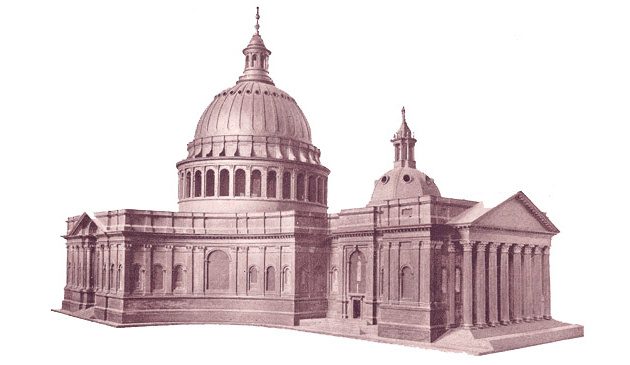The Great Fire of London

Wenceslaus Hollar’s contemporary illustration he named ‘The Prospect of this Citty, as it appeared from the opposite Southwarke side in the fire time’, which shows how the wind was spreading the conflagration from east to west. It was made from his imagination because he wrote after the event that it had “passed by us here at Whitehall. For all that there were great fears for one day that the flames would reach us here, I never saw them…”.
In 1666 none of the normal precautions could halt this fire. The wind was blowing hard from the east, fanning the flames that spread rapidly between the tinder-dry buildings. It proved difficult to obtain water quickly from the river because so many tightly-packed buildings stood in the way. There was general chaos in the surrounding streets as residents frantically attempted to save whatever possessions they could before the blaze reached their home. The south of the City was thronged with people and possessions. Boats along the river were commandeered to take residents away from the ever-spreading fire. People too sick to walk were carried in their beds, and parish churches – built of stone and protected by God, apparently safe from the fire – were being used as warehouses to securely store possessions. Goods were moved to new locations away from the fire but as it spread had to be moved time and time again.
The wind was blowing sparks high in the air, landing some way away from the fire. The tall steeple of St. Laurence Pountney, several streets away, suddenly began to burn, toppling dramatically to the ground and word spread amongst the crowds what many had suspected from early on: such a terrible fire was not normal, London must be under attack from the Dutch.
Samuel Pepys, Clerk of the Acts at the Navy Board, who resided above the Board’s offices in Seething Lane just to the east of the fire viewed the devastation from a vantage point of the tower of All Hallow’s church near Tower of London and could clearly see the lack of co-ordinated effort. From there he took a boat upriver to alert the King. Charles and the Duke of York were at Whitehall Palace awaiting news of the battle out at sea when Pepys arrived to inform them of what he had witnessed with his own eyes. Several months earlier Charles had written to the City authorities about the dangers of fire, giving them authority to create fire breaks when necessary. He now instructed Pepys to find the Mayor and ensure that buildings were being demolished to create such a fire break. Pepys should additionally, but confidentially, inform him that the King’s Life Guards from Whitehall would be available to help if requested, a controversial point in a city that had in recent times heavily guarded itself against royal troops. Pepys found Bludworth desperately failing to co-ordinate operations in Cannon Street, with no-one listening to him. Bludworth knew things were bad, but in his opinion there was certainly no need for troops to enter the City. Exhausted, the Mayor went home once again to recover.
The King and the Duke travelled down-river on the royal barge, disembarking at Queenhithe, close to where the fire had reached. By then a thousand houses and shops, nine churches and six Livery Company halls had been destroyed and the erratic wind was beginning to spread the fire back up into the centre of the City along Cannon Street. Hearing that his orders were not being carried out by the Mayor, Charles called for alderman Sir Richard Browne who had served as mayor in 1661 and proved himself a capable military leader, particularly during the Fifth Monarchist uprising that year. The King over-rode the authority of the Mayor and instructed buildings to be demolished to prevent a spread east back towards the Tower where vast amounts of gunpowder were stored. He called for the Coldstream Guards under the command of the Earl of Craven to give assistance.
As the light faded, onlookers not directly affected by the fire began to gather along the bank at Southwark on Sunday evening where they witnessed a spectacular view of the blaze and could hear the roar of falling buildings on the other side of the river. Paper and other debris was being carried in the wind and falling in areas to the west such as Kensington. The fire lit up the night sky and reports said the smoke stretched for 50 miles, casting a shadow as far as Oxford.
On the whole, only token efforts were made during Monday to halt the spread of the fire and they were mostly haphazard. Almost everyone was convinced it was the work of the Dutch and militia were walking the streets searching for any suspicious characters, with a number of foreigners arrested. Crowds began to attack anyone they recognised as a foreigner and their businesses were looted. The Earl of Craven’s Coldstream Guards had spent much of their time rescuing innocent foreigners from lynchings, as did the Duke of York. Secretary of State Lord Arlington dispatched letters to the governors of the forts at Gravesend and the authorities at Dover instructing them to prevent any foreign ships leaving.
Where buildings had been pulled down to create fire breaks the timber wreckage remained in the street allowing the flames to easily jump across. The Dean of Westminster marched his pupils through the City where they spent the day keeping the church of St. Dunstan-in-the-East, between Thames and Tower Streets on the very eastern edge of the fire zone, from catching alight. (It eventually burned the following morning).

